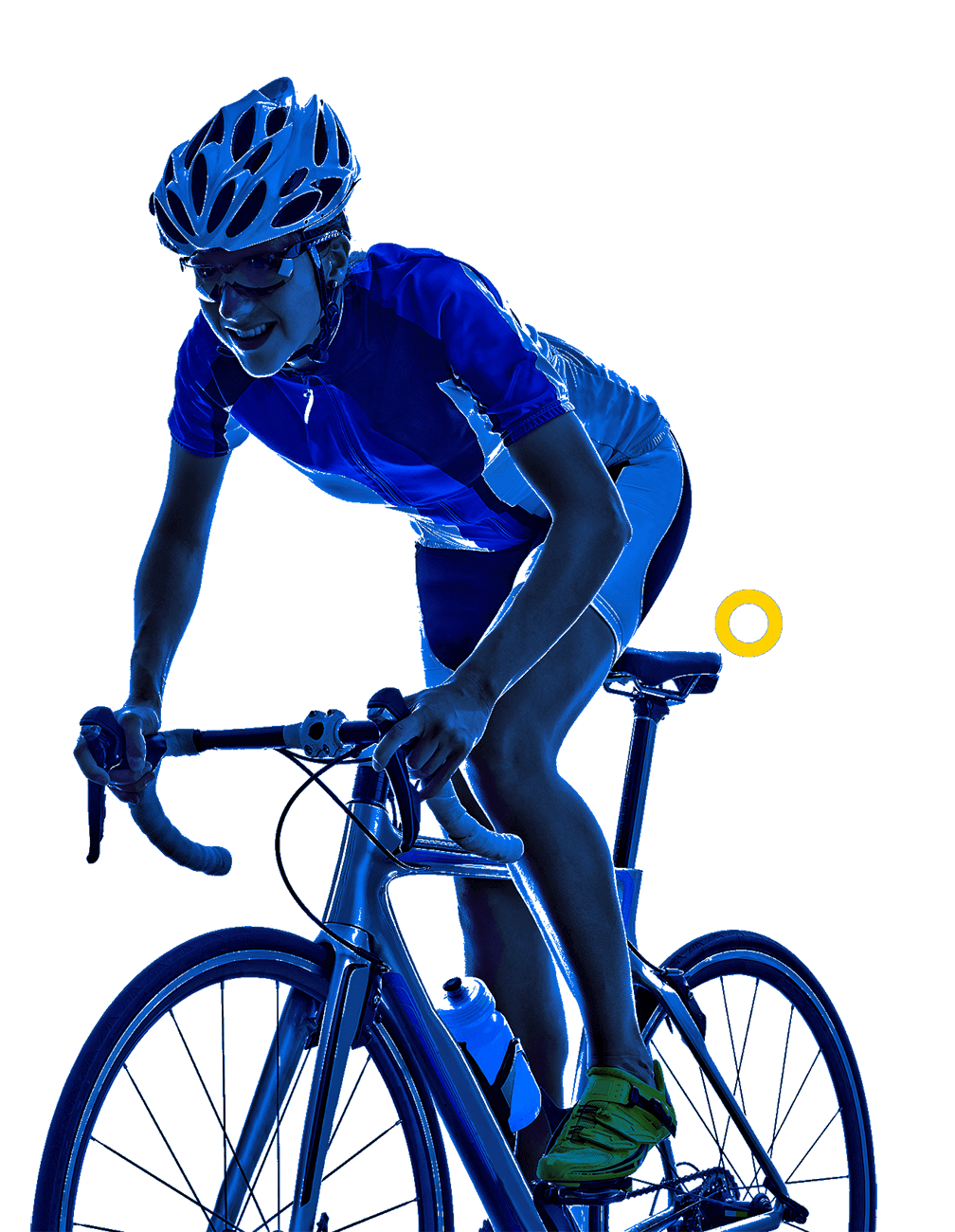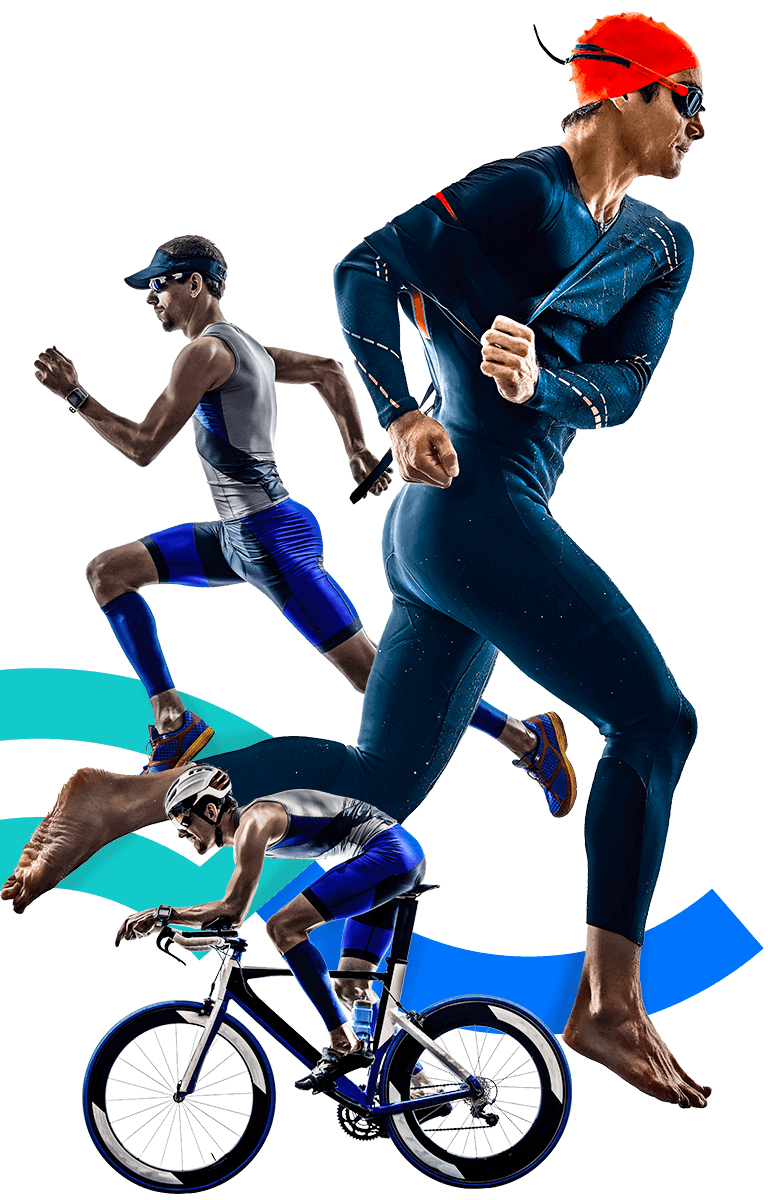How do you compete?
As the sport is three consecutive disciplines, triathlon requires a high mental and physical stamina.
Races start with swimming, follow-up with cycling and end up with running, with no interruptions between them.
The swimming event is done in open water, and all athletes start together until they complete the 1.5 km course.
Then they perform the first transition or T1, where they change their swimming equipment for the cycling one,
only then can they ride the bicycle upon leaving the Transition Area and passing the riding line.
The cycling route is 40 km long and normally it is done with several quick and short turns,
where group pedalling is allowed as in the road cycling events, so the mastery over the bicycle
and the ability to make quick speed changes are very important when competing.
The use of helmet is mandatory! Once it is finished, athletes go through the second transition or T2,
where they must leave their bicycles and prepare for the final event.
The last stage is the 10 km run, where the competition is determined.
Athletes must be capable of distancing themselves from other competitors to define the event and it is usual to see
sudden rhythm changes to set differences.
Although it is an event that lasts between 1:40 and 2:00 hours,
due to the distances included in each event, a high intensity is needed to compete.
At the Lima 2019 Pan American Games, the new Mixed Relay event was included,
where each team is comprised by two female athletes and two male athletes, where each athlete performs a short and fast triathlon in the order male-female-male-female.
The distances are 300 m in swimming, 6 km in cycling and 1.6 km in running.
Each athlete, upon finishing the triathlon, touching hands with the next teammate delivers the relay, so they can begin the next triathlon.
The Mixed Relay event is dynamic and shifting, and it is trilling and exciting for the spectators to follow.







